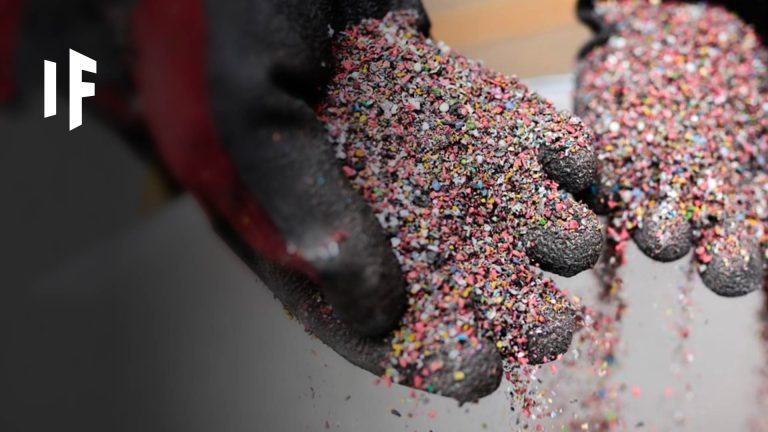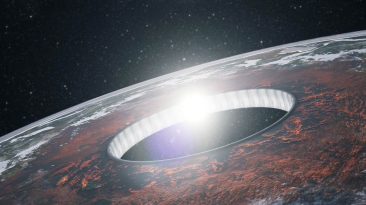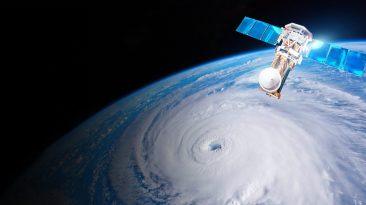Let’s say you’ve got two bottles of water in front of you. One is a plastic bottle, the other a reusable one.
You already know that you should probably pick the reusable one. It takes less than a minute to wash it, while the plastic bottle could take 500 years to decompose.
Plastic production, like for our bottle on the left, is predicted to keep skyrocketing in the next ten years, and our planet is going to pay the price. But, with all that plastic being made, is it possible we could do some good with it?
What if we were to use all that plastic and convert it into fuel? Could our cars run on fuel created from plastic? Could we live in plastic fueled homes?
How could we convert plastic into fuel? Would it help us? And could there be a downside?
Plastic hit the scene in 1869, when inventor John Wesley Hyatt offered the idea as an alternative to ivory. Why?
Well, billiards were all the rage back then, and the suppliers couldn’t keep up with the demand for ivory to make the balls. So, you could say the invention of plastic helped out environmentally, mostly for our elephant friends.
But since then, plastic manufacturing has doubled every 15 years, and it continues to do so. This puts plastic at the top of almost all man-made materials.
So how could we turn all that plastic into fuel? We may have a couple of options, the most popular being the pyrolysis method.
Pyrolysis creates energy by decomposing organic materials, by heating them up between 400°C and 650°C (752°F and 1202°F). This converts the materials into fuels, heat or electricity.
Now let’s combine this with something called cold plasma. Cold plasma produces high-energy electrons, which are especially good at breaking down the chemical bonds found in plastics.
So if you were to marry these two, you could take the plastics we treat as waste, and convert them into methane, hydrogen and ethylene. Both hydrogen and methane can be used as clean fuels, since their output of harmful compounds is minimal.
This process would allow us to give new life to all this plastic waste, converting it into a valuable resource, and making it available to industry for reuse. If we were able to pull it off, would it do any good?
According to a study by the Bren School of Environmental Science and Management, since we began mass-producing plastic about 60 years ago, it’s estimated that over 8 billion tons of it is now inhabiting the Earth. Of that, more than 6 billion tons of it is plastic waste.
Up to 2015, less than 10 percent of it had been recycled, and nearly 80 percent of it is either in landfills or polluting the environment as litter. By using plastic for fuel, we would be able to transform it into something other than just a base for products destined to pollute our land and ocean.
And it’s good for more than just the environment. The American Chemistry Council reports that plastic-to-fuel facilities in the U.S. could create approximately 39,000 jobs and $9 billion in economic benefits.
How’s that for some inspiration? But not everyone is on the plastic for fuel bandwagon.
Could there be a downside? One of the primary objections some environmentalists have is that the industry is deceiving people.
Their concern is that this not a form of recycling, since the plastics can only be used once; and when they’re processed into fuel they become part of the problem, not the solution. They also fear that plastic-to-fuel is causing a false sense of security, when we really should be showing extreme concern about the damage being done to our environment daily.
So, after all that, could we pull it off? Well, plastic-to-fuel doesn’t produce the same amount of energy as petroleum – yet.
We’ll need to continue building and perfecting the plastic-to-fuel process. In a world fueled by money, and sources like petroleum becoming more and more expensive to produce, a fuel source that is relatively cheap might be what helps to win industries over to adopting this idea.
But, plastic-to-fuel is only one of the ideas for countering the environmental extremes that we are now facing. What else could we create from a renewable source? Could we create something like food?
- “Production, Use, And Fate Of All Plastics Ever Made”. Geyer, Roland, Jenna R. Jambeck, and Kara Lavender Law. 2017. Science Advances 3 (7): e1700782. American Association for the Advancement of Science (AAAS). doi:10.1126/sciadv.1700782.
















